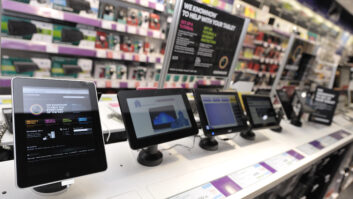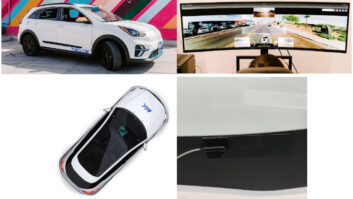NEW YORK —
The GPS industry and Lightsquared,
which plans a satellite- and terrestrial-based 4G
voice and data network, will conduct field tests to determine
whether Lightsquared’s terrestrial cell sites
will, as Garmin believes, interfere with the operation
of GPS-equipped consumer products and commercial
devices.
Based on lab tests using one of its portable navigation
devices (PNDs) and one of its aircraft GPS
units, Garmin found that its PND would completely
lose GPS satellite signals within 0.66 miles of a cell
site when the PND is under an open sky. In urban
areas where some GPS satellites’ signals are more
likely to be blocked, the PND would lose its position
within 1.79 miles of Lightsquared cell sites, which
would operate in the 1525MHz to 1559MHz band
next the 1559MHz to 1610MHz GPS band.
Lightsquared plans to build 40,000 cell sites, most
of which will be in urban areas where most consumer
GPS devices are used, a Garmin spokesman
warned. The terrestrial network will cover 92 percent
of the U.S. population in 2015 if all goes according
to plan.
The effects of base-station jamming on Garmin’s
avionic device were greater, with the device losing
its location within 5.6 miles of a cell site while in the
open sky.
Although Garmin’s PND test involved only one
PND model, Garmin said the device was representative
of most PNDs and that the PND test likely replicates
the interference that other types of consumer
GPS devices would encounter. Those devices would
include GPS-equipped cellphones and in-dash navigation
systems.
For its part, Lightsquared said it is working cooperatively
with the GPS Industry Council to develop test
methodology that will use real base stations and multiple
GPS devices in real-world situations. But Lightsquared’s
Jeff Carlisle, regulatory affairs executive VP, noted that
the base stations were designed with filters endorsed by
the GPS Industry Council about eight years ago to prevent
out-of-band emissions from entering the GPS band.
The filters were developed by Lightsquared’s predecessor
company, Mobile Satellite Ventures, which proposed
a hybrid satellite-terrestrial network to the Federal Communications
Commission (FCC), and the filters abide
by “stricter out-of-band emission restrictions that those
required by the FCC,” Carlisle noted.
Carlisle also contended that Garmin’s lab tests simulated
a filter that “allowed significantly more interference
to get through” than the filters that will be used in the
base stations.
As a result, Carlisle said he suspects “a significant
number of GPS receivers are adequately filtered” and
won’t suffer interference issues. However, “some subset
of receivers are looking into the L band,” he said. Field
testing will determine how many GPS receivers are susceptible
and will help Lightsquared “know exactly how
our transmitters are operating,” he said.
Once the tests determine the types, models and number
of devices affected, the next step would be to determine
how the affected devices are used and whether
users would come close enough to a base station to be affected,
Carlisle said. The tests might be able to isolate the
susceptible products to a specific GPS chipset, he noted.
The FCC has asked for a final report by June 15.
For his part, the Garmin spokesman said his company’s
lab tests used conservative parameters and noted
that the tests simulated full-strength reception of the
maximum number of 12 GPS satellites that a navigation
device could see at one time.
Although future versions of susceptible navigation devices
could be built with additional filtering, Garmin said
a filter would not be a “cheap easy fix” and that it’s unclear
how existing devices in use could be filtered. The
FCC, he noted, wasn’t clear on who would be responsible
to fix any problems.
Although Garmin’s test involved only one PND model,
Garmin said the device was representative of most PNDs
and that the test likely replicates the interference that
other consumer GPS devices would encounter. Those
devices would include GPS-equipped cellphones and
in-dash navigation systems.













